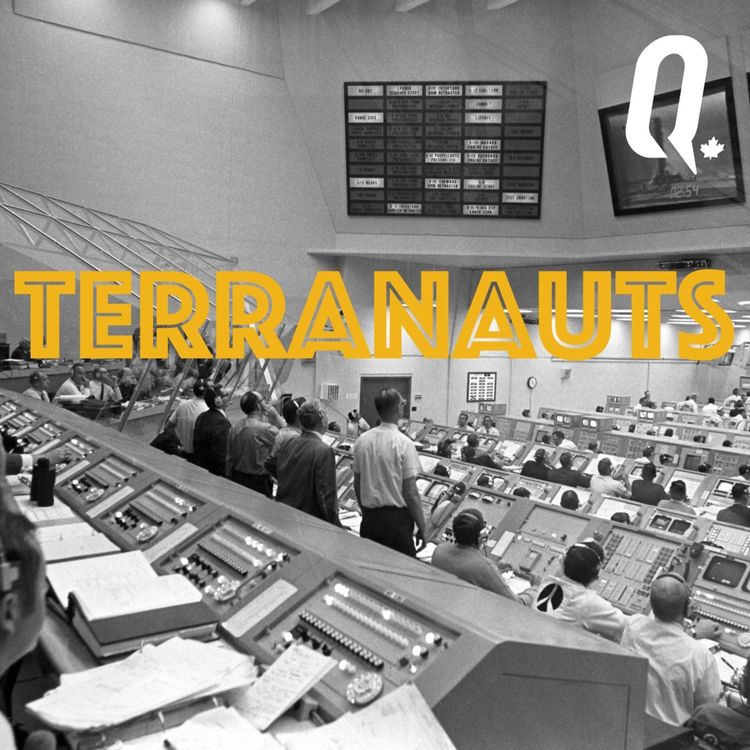Share

Terranauts
The First Loss
Season 4, Ep. 17
•
n today's episode we pick up the Gemini story with preparation for Gemini IX. That means that we have to talk about the tragic events surrounding the deaths of Elliot See and Charles Basset who were the first NASA astronauts to die in the line of duty. We'll also talk about how NASA and the Gemini program moved on past this tragedy and how the backup crew of Tom Stafford and Gene Cernan stepped up to See and Basset who had been the prime crew for Gemini IX.
More episodes
View all episodes

20. That's a Wrap
06:03||Season 4, Ep. 20Just a short announcement today to wrap up season four of Terranauts - and yes, there will be a season five. I hope you have been enjoying the journey so far and that you'll join us in the fall as we make the transition from Gemini to Apollo.
19. Terranauts Episode 75
31:00||Season 4, Ep. 19Today's episode is dedicated to all of those Terranauts who work in the back hallways and committee meeting rooms to make sure that there is support (and funding) for the various programs that get humans and their inventions a chance to get off the planet. I have worked with too many of these dedicated and talented individuals to mention them here by name. It can be a thankless job and one that is not always shown the respect it deserves. Doing it well requires as much talent, vision and creative problem solving as any scientific discovery or engineering breakthrough. Those that do it well benefit everyone around them, although it may not always be obvious. As Mac Evans points out in this episode - in a very real way there is a Canadian astronaut headed to the Moon in 2024 because of work that he and other talented and dedicated Terranauts did in 1994.To all who have done and continue to do that job - Thanks.
18. Hanging By A Thread
30:49||Season 4, Ep. 18When last we left Mac Evans (in an episode called The Flag Is A One) - he was in the mission control centre of the Canadian Telecommunications Satellite (CTS), having just rescued it from an untimely demise. This was important because CTS was the first modern telecommunications satellite and set the pattern for 20 years of satellite development. It was an important Canadian contribution to the humanity's journey off the planet. Today we are going to talk about a different kind of last minute rescue. Today the rescue involves not just a satellite, but, in effect, a whole national space program.
16. After Eight
27:34||Season 4, Ep. 16Today we take a little bit more time to examine the events of Gemini VIII and what NASA learned from that experience. For one thing it learned the value of having test pilots as astronauts. But it also learned that having a team on the ground that could adapt to rapidly changing events on orbit was pretty important as well.
15. The Spin Cycle
28:55||Season 4, Ep. 15When we left first time Astronauts Neil Armstrong and Dave Scott aboard Gemini VIII, they were just getting to orbit after what had been a pretty nominal launch of both their spacecraft and the Agena target vehicle that would rendezvous with. As we'll see, as the crew settled down to begin their rendezvous task the flight continued to go very well. Until it didn't...
14. Getting Ready For Gemini VIII
31:51||Season 4, Ep. 14Gemini VIII was the first mission of 1966 and the first mission of the second half of Gemini's flight program. All of the big boxes had been checked, but that did not mean there was not a lot left to do. This week we talk about plans for Gemini VIII and we introduce a gentleman named Neil Armstrong who, at the time, was just a first time mission commander.
13. Atlas-Agena - Selecting A Target
31:13||Season 4, Ep. 13In this episode we get caught up on what had been going on with the Agena program. Remember those guys? They were the ones whose rocket had blown up after launch which had caused the Gemini VI mission to be aborted before it even got off the launch pad. While the rest of the Gemini program has been making history, they have been trying to figure out how to get back to flight status.
12. The Year is 1966
30:33||Season 4, Ep. 12As the calendar turned over from 1965 to 1966, the Gemini program was entering a new phase. Having completed half of it's flight program and having made progress on all of it's major objectives, the program was already thinking about wrapping up. In a sense though, Gemini was just a marker of its time. A lot of things were changing quickly as the world moved from 1966 at NASA, in the space program and even around the world. In this episode of Terranauts we take a moment to look at what the world looked like at the dawn of the year 1966.